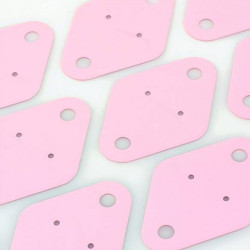shopping_cart
Krepšelis
0,00 PLN
0
Iškarpinė
Jūs turite būti prisijungę
Termiškai izoliacinės medžiagos
Informacija
Produktų, kurie stulpelyje „Galimas kiekis“ pažymėti „Pagal užsakymą“, paprastai nėra sandėlyje. Tokių produktų galima įsigyti, tačiau dėl ribotos klientų bazės jie paprastai turi didesnius minimalius kiekius. DACPOL siūlo produktus, kurių nėra sandėlyje dėl šių priežasčių: Šiuo metu DACPOL turi daug elektroninių komponentų ir kiekvieną dieną pridedama naujų produktų, tačiau mūsų tiekėjai gali įsigyti dešimtis tūkstančių papildomų komponentų ir įvairių jų variantų. Nors yra neprotinga turėti visus šiuos produktus sandėlyje dėl riboto pardavimo, manome, kad jų klientams yra naudingiausia juos pateikti. Mūsų tikslas yra informuoti klientus apie maksimalų turimų produktų skaičių ir suteikti jiems galimybę priimti sprendimus, atsižvelgiant į specifikacijas, kainas, prieinamumą, reikalingus minimalius parametrus ir mūsų technines konsultacijas. Atkreipkite dėmesį, kad pažymėjus žymimąjį laukelį „Sandėlyje“ gali būti rodomi tik tie produktai, kuriuos galima pristatyti tiesiai iš lentynos.
| Paveikslėlis | Peržiūrėti produkt | Gamintojo nr. | ||||||||
|---|---|---|---|---|---|---|---|---|---|---|
| picture_as_pdf |

|
Kerafol | Šiluminės šiluminės izoliacinės medžiagos | PAMATYKITE | -- | Galimas kiekis | -- | -- | -- | -- |
| picture_as_pdf |

|
Kerafol | U85 | PAMATYKITE | -- | Galimas kiekis | ||||
| picture_as_pdf |

|
Kerafol | „Keratherm U80“ šiluminis padas | PAMATYKITE | U80 | Galimas kiekis | ||||
| picture_as_pdf |

|
Kerafol | 86/82 | PAMATYKITE | 86/82 | Galimas kiekis | ||||
| picture_as_pdf |

|
Kerafol | „Keratherm 86/60“ šilumos padas | PAMATYKITE | 86/60 | Galimas kiekis | ||||
| picture_as_pdf |

|
Kerafol | „Keratherm 86/50“ šilumos -laidžios trinkelės | PAMATYKITE | 86/50 | Galimas kiekis | ||||
| picture_as_pdf |

|
Kerafol | Keratherm 86/37 heat -conducting pad | PAMATYKITE | 86/37 | Galimas kiekis | ||||
| picture_as_pdf |

|
Kerafol | „Keratherm U90“ šiluminis padas | PAMATYKITE | U90.RO.00200.M000470 | Galimas kiekis | ||||
| picture_as_pdf |

|
Kerafol | Keratherm L86/50 -PEK ŠILE | PAMATYKITE | -- | Galimas kiekis | ||||
| picture_as_pdf |

|
Kerafol | Keratherm 86/30 heat -conducting pad | PAMATYKITE | 86/30 | Galimas kiekis |
Rezultatai puslapyje:
Thermal pads are special components, often in the form of thin layers, used between two surfaces to facilitate heat conduction. Their main purpose is to effectively dissipate heat generated by electronic components, helping to maintain appropriate temperatures and prevent overheating. Below, you will find some key information about thermal pads:
Thermal Pad Features:
-
Materials:
- They can be made from various thermally conductive materials, such as silicone, thermal rubber, ceramic materials, or special composites.
-
Thickness:
- They are typically available in various thicknesses, allowing for customization to specific requirements and design tolerances.
-
Thermal Conductivity:
- They exhibit good thermal conductivity, effectively transferring heat from one component to another.
-
Flexibility:
- Depending on the material, they can be somewhat flexible, making them suitable for irregularly shaped surfaces.
-
Resistance to Extreme Conditions:
- Depending on the material used, they can be resistant to high temperatures, chemicals, or moisture.
Applications of Thermal Pads:
-
Electronics:
- In computers, laptops, smartphones, where they are placed between processors and heatsinks for efficient cooling.
-
LED Lighting:
- In LED modules to maintain the proper temperatures of LED diodes.
-
Automotive:
- In automotive electronics, such as between power circuits and radiators.
-
Industrial:
- In various industrial applications where effective heat dissipation from electronic components is necessary.
Thermal pads are a crucial element in the field of heat management in electronics and other industries, where efficient cooling is essential to maintain component performance and durability.



